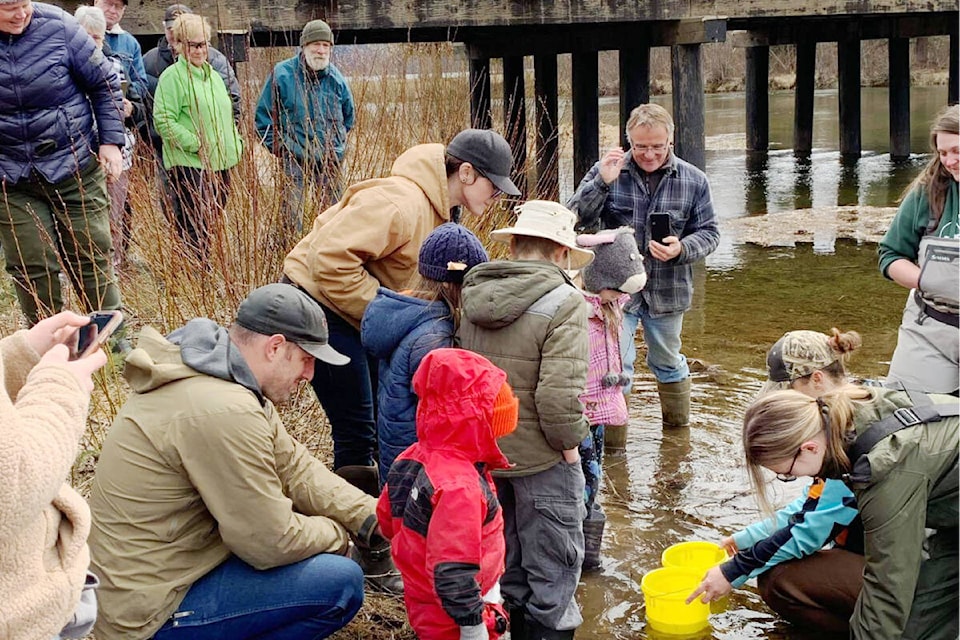It was no ordinary drive from Prince George to the Bowron River, east of Quesnel, for the Spruce City Wildlife Association (SCWA).
Every half hour, the not-for-profit group had to stop to check the oxygen levels of transport tanks teeming with thousands of juvenile chinook salmon on Sunday, May 8.
It took about four hours for them to reach the head of the Bowron River to release approximately 28,000 salmon fry as part of a stock rebuilding effort.
“We have a hose on the transport tank, and you just pull the plug, and away they go out into the river,” said SCWA president Dustin Snyder.
“And because a good number of community members had heard about it and wanted to be involved, we also did a bucket method.”
Read More: Juvenile salmon gain access to crucial B.C. habitat for first time in 100 years
The association works closely with the Upper Fraser Fisheries Conservation Alliance and Fisheries and Oceans Canada to rebuild endangered and threatened salmon stocks in the Upper and Lower Fraser.
“The Bowron River was one of the stocks that was selected for us to work on last year, and we went out in the fall when the adult chinook are coming back to spawn,” Snyder said, noting they were successful in collecting around 30,000 eggs which were raised at their hatchery in Prince George.
The salmon fry are always released in the spring, where they begin their five-year life cycle once back in the river.
Thousands more are planned to be released later this month at the Nechako River and the Swift Creek near Valemount.
“Hopefully, that will help boost the population so that five years from now, we’ll see more fish return to the river to spawn naturally,” Snyder added.
“Making sure the stocks are rebuilt and are surviving is not just important for salmon and humans who want salmon on their dinner plate but everybody else in nature (bears, eagles, etcetera) who wants salmon on their dinner plate as well.”
Do you have something to add to this story, or something else we should report on? Email: rebecca.dyok@quesnelobserver.com
Like us on Facebook and follow us on Twitter.
